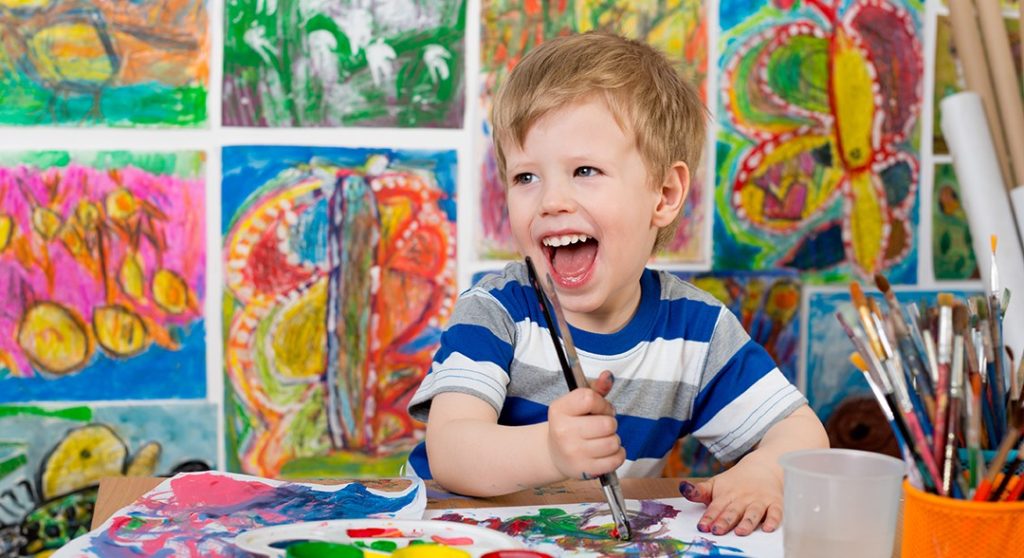Art for young children
May 04, 2022

Remember that your child is not usually drawing you ‘a thing’ – it’s the whole process of scribbling and enjoying the pencil movements and shapes that they’re learning. Celebrate the process and not the product and keep it fun.
First drawings
You’ll notice that your child’s first dabs and dots, often with a fisted grasp, soon develop into light scribbles in a backwards and forwards movement. Wax crayons, stubby chalks and crayons are ideal to use at this stage. One- to two-year-olds are still using their mouths a great deal as a way to find out about objects, so scribbling tools must be non-toxic, non-inky and washable.
Watch out for walls and furniture!
Children haven’t yet learned to distinguish what should be scribbled on and what should not. You may need patience and understanding to celebrate your child’s new-found ability to scribble, yet make sure that they only scribble on the right things! Do this by giving them clear information and distracting them with something more appropriate to do instead.
Left or right handed?
Your child won’t remember how to hold the pencil crayon properly yet, and, in any case, is enjoying experimenting with different hands, positions and grasps. Wait until your child has developed a clear hand preference (usually around the age of two) and then try triangular pencils for the best chance of encouraging a less fisted hold with the tips of three fingers forming a ‘tripod’ position.
Talk about their pictures
Rather than ask, “What is it?” try “Tell me what you’re doing”. Show your interest through your praise and encouragement. Provide a running commentary about what your child is doing and try not to bombard them with too many questions. Gradually lines will begin to emerge from the scribbles and human forms begin to emerge. The child usually draws a person or character as their first ‘real life’ representation. The way this happens shows a very typical sequence of development and you’ll be intrigued to watch this; keep examples to look back on later.
Keep plentiful supplies of scrap paper. Try to have a tray of paper and a pot of implements always on hand. Look for different colours and different textures. Sharing drawing and art times together helps your child develop all kinds of developmental skills. These experiences encourage their language, give them an understanding of quantity and space and help them develop clever finger movements. They enjoy being creative and, above all, feel secure and confident in their relationship with you.
Different art materials
Begin to think of offering your child a wider range of art opportunities. Try a chalk board at child-height, a white board with washable implements, or a computer, tablet or phone to try out simple digital painting games.